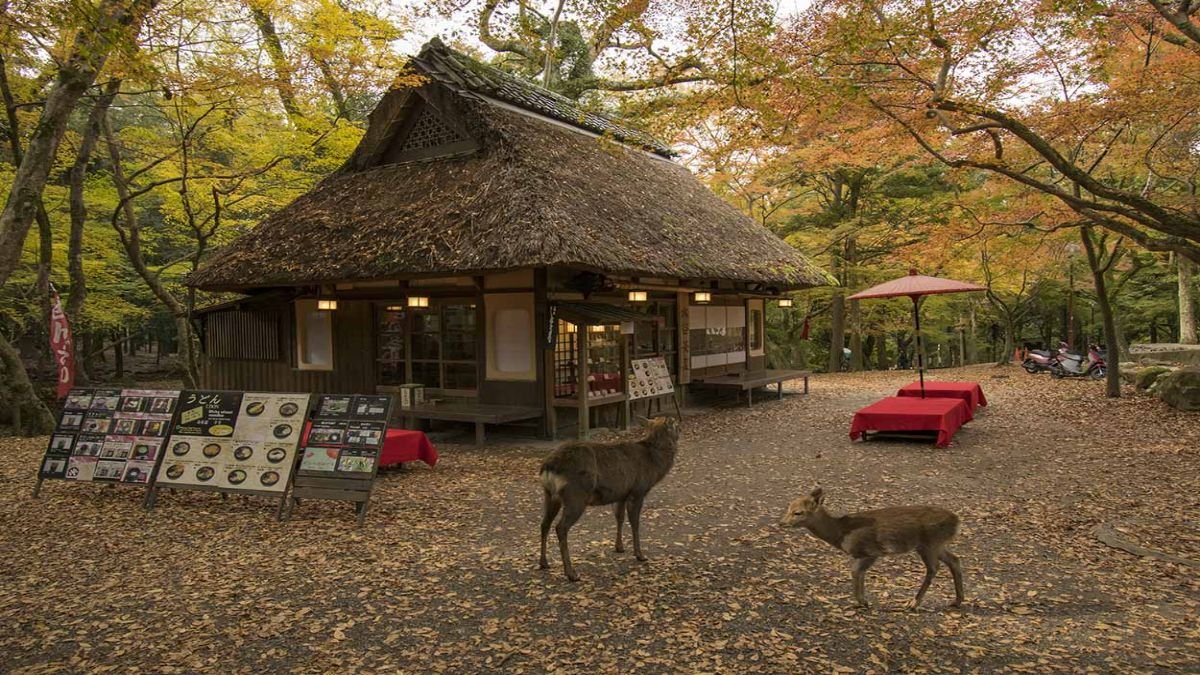Overview:
Japan is a country of mesmerizing contrasts where ancient traditions blend seamlessly with cutting-edge technology.
From its vibrant cities to serene natural landscapes, Japan offers a rich cultural tapestry that captivates visitors from all over the world.
Whether you’re fascinated by centuries-old temples, modern architecture, or scenic vistas, Japan promises an unforgettable journey.
Let’s dive into the top 15 tourist attractions in Japan that showcase the unique beauty and cultural heritage of this island nation.
Table of Contents
1. Tokyo Tower, Tokyo
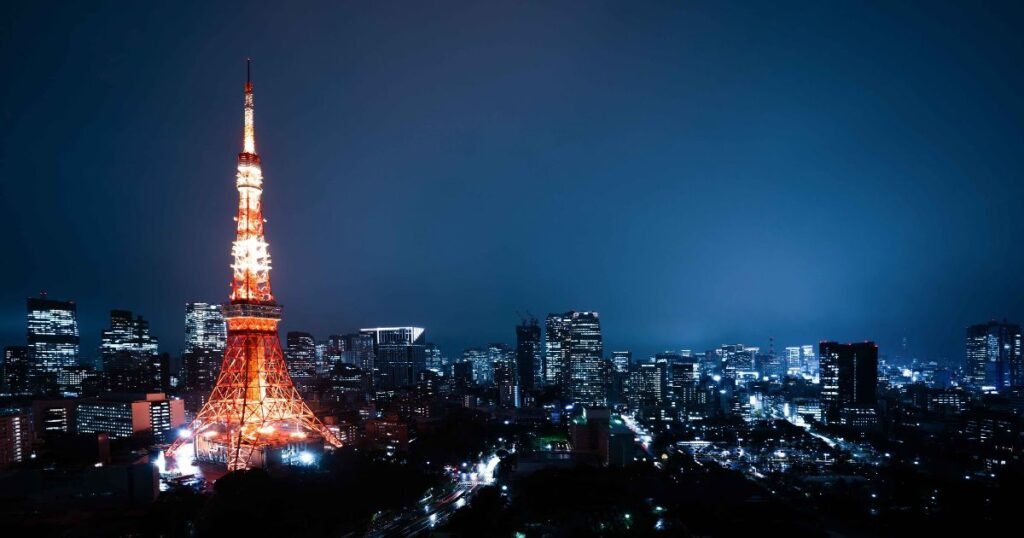
The Tokyo Tower stands as a symbol of Japan’s post-war rebirth. Resembling the Eiffel Tower in design, it offers stunning views of the sprawling cityscape and is an emblem of Japan’s modernity.
Historical and Cultural Significance: Built in 1958, Tokyo Tower was initially a broadcasting tower and now serves as a popular observation point, reflecting Japan’s rapid modernization in the 20th century.
Unique Features: At 333 meters, the tower’s two observation decks provide panoramic views of Tokyo, including iconic sites like Mount Fuji on clear days.
Best Time to Visit: Visit the tower in the late afternoon for views during daylight, and stay until the evening to witness the dazzling city lights.
Travel Tips:
- Transportation: Tokyo Tower is easily accessible by public transportation. The nearest subway stations are Akabanebashi, Onarimon, and Kamiyacho.
- Accommodation: Tokyo has a wide range of accommodations, from budget hostels to luxury hotels. Staying near Minato is convenient for exploring central Tokyo.
- Local Customs: Bowing is a common gesture in Japan to show respect. Additionally, tipping is not practiced in Japan, so it’s not expected when dining or receiving services.
2. Kyoto’s Fushimi Inari Shrine
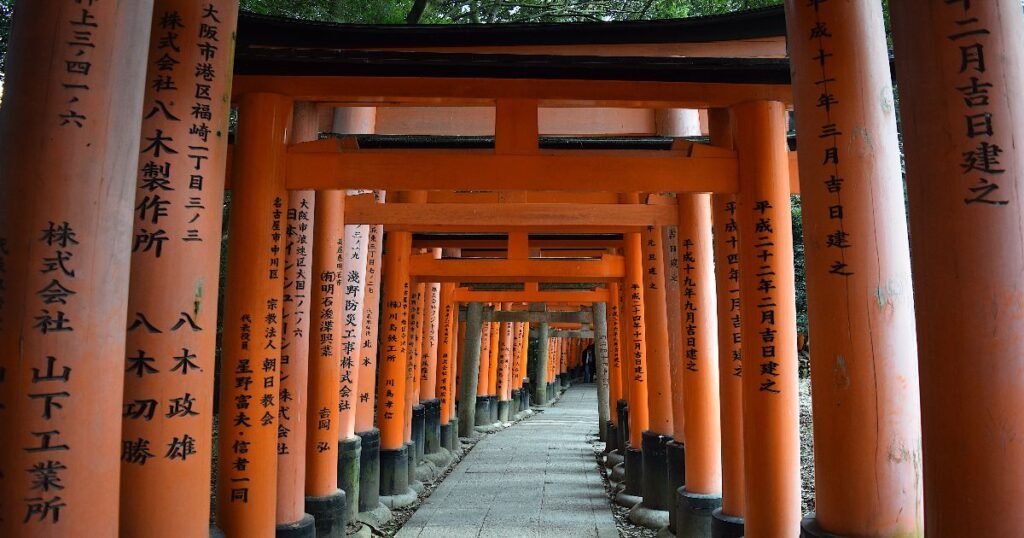
Fushimi Inari Shrine is one of Japan’s most iconic religious sites, renowned for its thousands of vermillion torii gates that form an enchanting pathway up Mount Inari.
Historical and Cultural Significance: This Shinto shrine, dedicated to the god of rice and agriculture, dates back to 711 AD and has become a significant spiritual center in Japan, attracting millions of pilgrims.
Unique Features: The seemingly endless rows of bright red torii gates are a photographer’s dream and symbolize prosperity and good fortune.
Best Time to Visit: The shrine is open year-round, but visiting early in the morning or late in the evening allows you to avoid the crowds.
Travel Tips:
- Transportation: Fushimi Inari is a 5-minute walk from Inari Station on the JR Nara Line.
- Accommodation: Kyoto has a variety of accommodations, from traditional ryokan inns to modern hotels. Staying near the city center provides easy access to major sites.
- Local Customs: Fushimi Inari is a sacred site, so be mindful of your behavior. Refrain from loud conversations and be respectful of the shrines and offerings.
3. Mount Fuji, Honshu
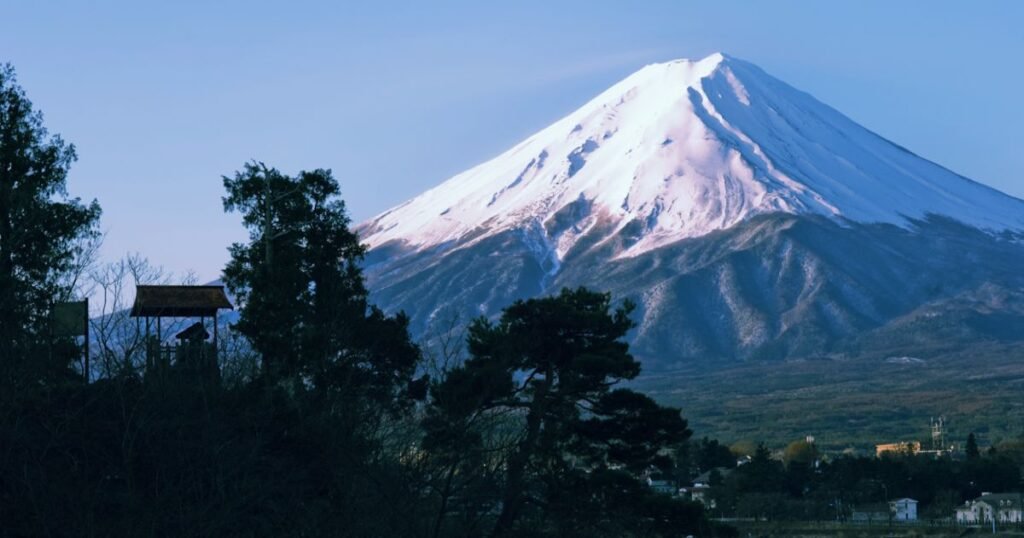
Mount Fuji, Japan’s tallest mountain, is an active volcano and one of the most famous symbols of Japan. It is revered as a sacred site and is often depicted in Japanese art.
Historical and Cultural Significance: Mount Fuji has been a spiritual pilgrimage site for centuries, and it continues to hold deep religious significance in Japanese culture. It is also part of the Fuji-Hakone-Izu National Park.
Unique Features: Standing at 3,776 meters, Mount Fuji offers breathtaking views from afar and is a popular spot for climbers during the summer months.
Best Time to Visit: The climbing season runs from July to early September when the weather conditions are ideal for hiking.
Travel Tips:
- Transportation: Mount Fuji is accessible by train and bus from Tokyo. You can reach the base of the mountain in about 2 hours.
- Accommodation: There are accommodations available at the mountain’s base, including hostels, hotels, and mountain huts for those planning to hike.
- Local Customs: Respect the mountain’s spiritual importance by following all guidelines, especially when hiking. Stay on designated trails and respect local wildlife.
4. Arashiyama Bamboo Grove, Kyoto
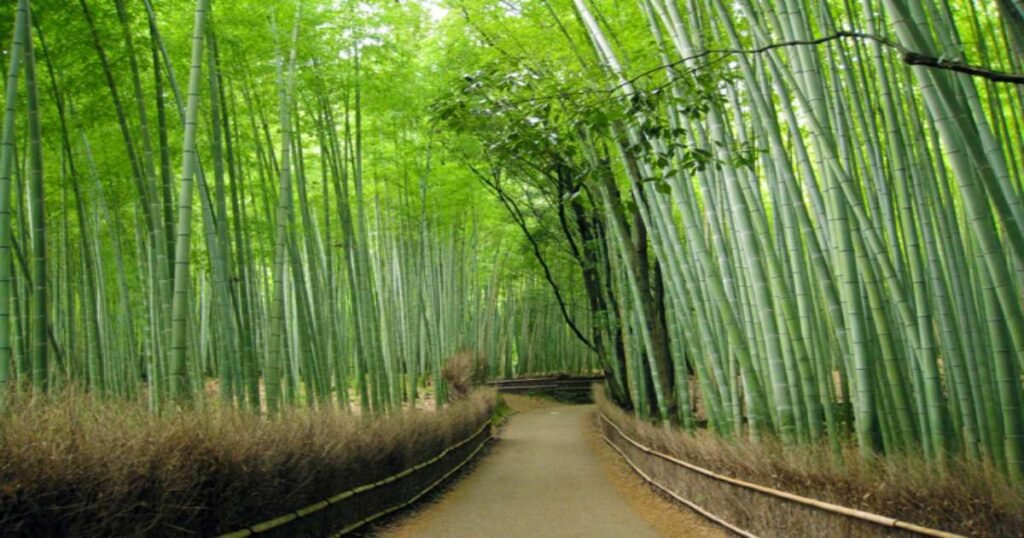
The Arashiyama Bamboo Grove is one of the most serene and otherworldly spots in Japan, with towering bamboo stalks creating a natural canopy.
Historical and Cultural Significance: Located on the western outskirts of Kyoto, Arashiyama has been a popular destination since the Heian Period (794-1185). The bamboo groves were historically part of the Tenryu-ji Temple.
Unique Features: Walking through the bamboo forest is a peaceful and sensory experience, with the gentle rustle of bamboo leaves adding to the tranquility.
Best Time to Visit: The grove is beautiful year-round, but visiting early in the morning or on a weekday will allow you to enjoy it with fewer crowds.
Travel Tips:
- Transportation: The Bamboo Grove is a short walk from Saga-Arashiyama Station on the JR Sagano Line.
- Accommodation: Staying in Kyoto will provide easy access to the grove and other attractions. There are many hotels and ryokan options available.
- Local Customs: Arashiyama is a place of quiet reflection, so respect the peaceful atmosphere by keeping noise to a minimum.
5. Himeji Castle, Himeji
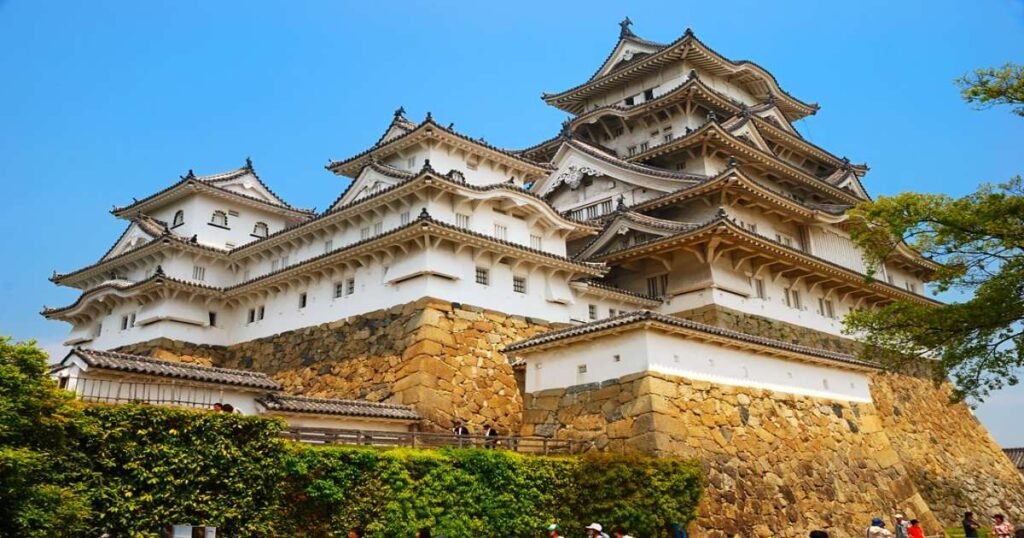
Himeji Castle, often referred to as the “White Heron Castle” due to its elegant, white exterior, is one of the most beautifully preserved castles in Japan.
Historical and Cultural Significance: Dating back to 1333, Himeji Castle is a UNESCO World Heritage Site and is considered Japan’s most spectacular surviving example of traditional feudal architecture.
Unique Features: The castle’s impressive size, strategic fortifications, and pristine condition make it a must-see for history enthusiasts.
Best Time to Visit: The best time to visit Himeji Castle is in the spring (March to April) when the cherry blossoms are in full bloom, providing a stunning backdrop to the castle.
Travel Tips:
- Transportation: Himeji is a short train ride from Osaka or Kyoto, making it an easy day trip.
- Accommodation: For those who wish to stay in Himeji, there are hotels near the castle or within the city.
- Local Customs: Photography is allowed outside, but be mindful when visiting indoor areas where flash photography may be prohibited.
6. Nara Park, Nara
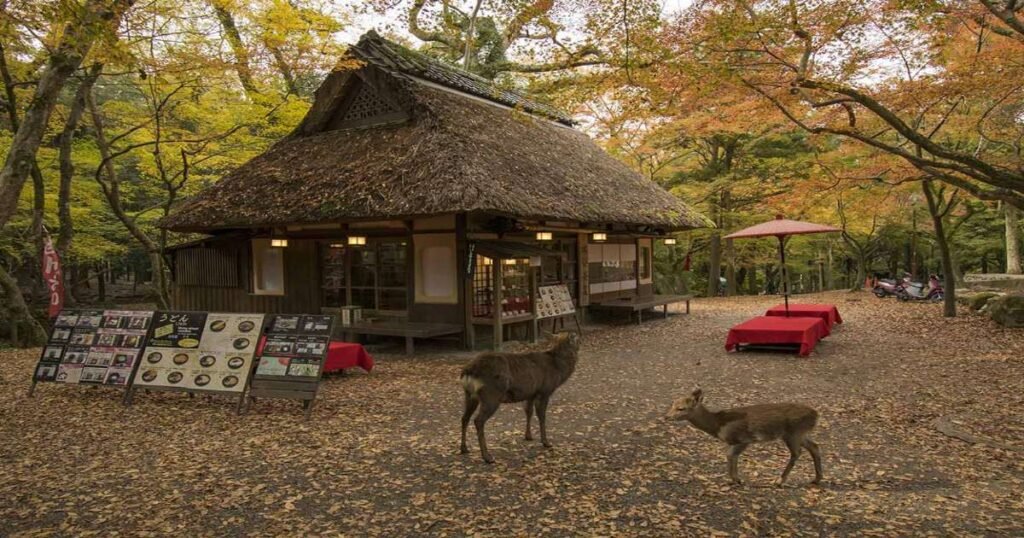
Nara Park is home to hundreds of freely roaming deer, which are considered sacred in the Shinto religion. It is also the site of Todai-ji Temple and other historical treasures.
Historical and Cultural Significance: Nara was Japan’s first permanent capital, established in the 8th century. Nara Park reflects the city’s ancient heritage and religious significance.
Unique Features: The tame deer are a main attraction, and visitors can feed them special crackers sold by vendors. The park also features Todai-ji’s Great Buddha statue.
Best Time to Visit: Nara Park is beautiful year-round, but the best time to visit is during autumn (October to November) when the leaves change color.
Travel Tips:
- Transportation: Nara is a short train ride from Kyoto and Osaka.
- Accommodation: There are numerous hotels in Nara, including traditional ryokan inns.
- Local Customs: Be respectful when interacting with the deer, as they are considered sacred. Feeding them the special crackers is allowed, but avoid offering other types of food.
7. Hokkaido’s Shiretoko National Park
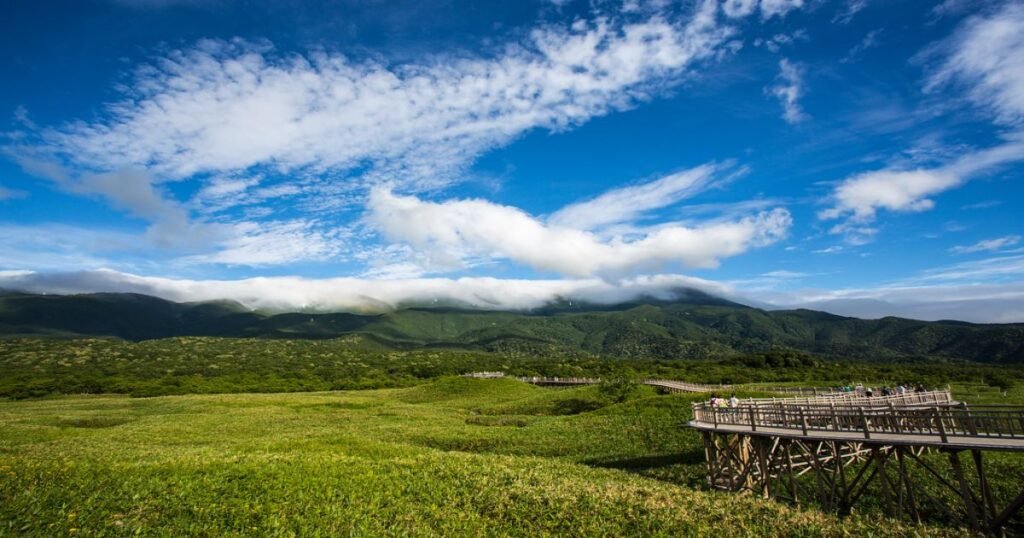
Shiretoko National Park, located on Japan’s northernmost island, Hokkaido, is a haven for nature lovers. Its rugged cliffs, dense forests, and abundant wildlife make it a UNESCO World Heritage Site.
Historical and Cultural Significance: Shiretoko is one of Japan’s most unspoiled natural areas and plays a crucial role in the conservation of endangered species, such as the Blakiston’s fish owl.
Unique Features: The park’s wild landscapes include hot springs, waterfalls, and views of wildlife, such as brown bears and orcas.
Best Time to Visit: The best time to visit is from May to September when the weather is milder, and hiking and wildlife viewing are at their peak.
Travel Tips:
- Transportation: Shiretoko is a remote area, best accessed by car or bus from nearby towns.
- Accommodation: Lodging options include eco-lodges and guesthouses in the towns near the park.
- Local Customs: Visitors should respect the park’s natural beauty by not leaving any litter behind and following wildlife safety guidelines.
8. Osaka Castle, Osaka
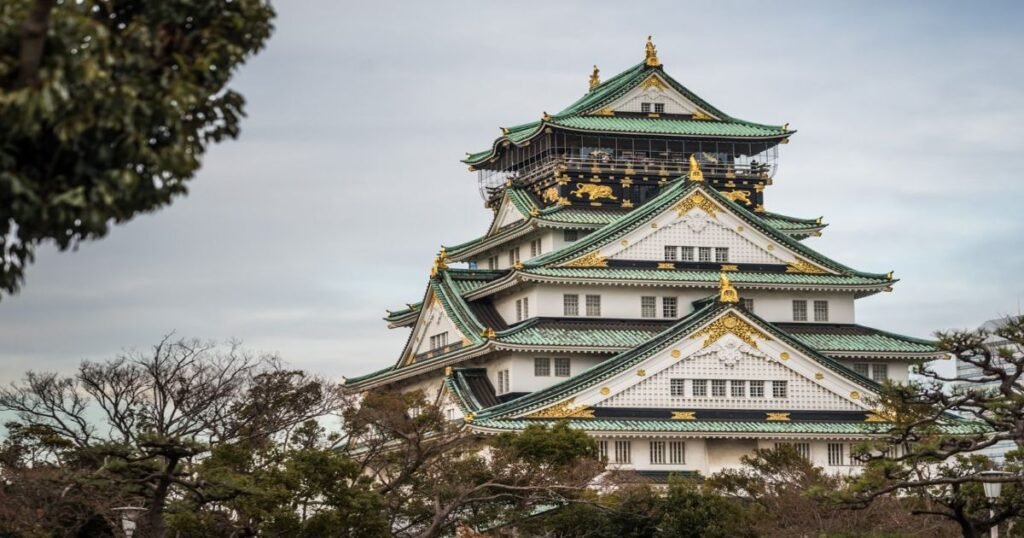
Osaka Castle is one of Japan’s most iconic historical landmarks, reflecting the country’s feudal past. With its grandiose design and beautiful park surroundings, the castle offers both history and scenic beauty in the heart of Osaka.
Historical and Cultural Significance: Originally built in 1583 by Toyotomi Hideyoshi, one of Japan’s most famous unifiers, the castle played a key role in Japan’s feudal conflicts and power struggles.
Unique Features: The main tower of Osaka Castle stands out with its gleaming gold accents and massive stone walls. The surrounding Nishinomaru Garden is a prime spot for cherry blossom viewing.
Best Time to Visit: The best time to visit Osaka Castle is in the spring (March to April) when cherry blossoms surround the castle, offering a spectacular sight.
Travel Tips:
- Transportation: Osaka Castle is easily accessible via the JR Loop Line to Osakajokoen Station.
- Accommodation: Osaka offers a range of accommodations, from luxury hotels to budget hostels. Staying in the Umeda or Namba districts is convenient for city exploration.
- Local Customs: Remember to maintain silence and respect when entering the museum sections inside the castle.
9. Miyajima Island and Itsukushima Shrine, Hiroshima
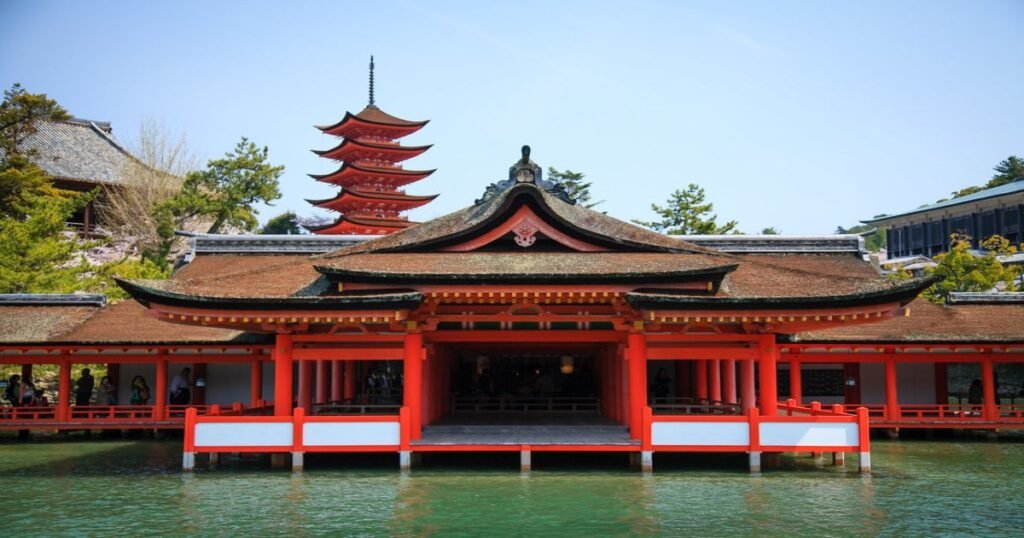
Miyajima Island, also known as Itsukushima, is famous for its floating torii gate and is considered one of Japan’s top three scenic views. The island offers a peaceful retreat and stunning cultural experiences.
Historical and Cultural Significance: Itsukushima Shrine, with its “floating” torii gate, has been a sacred site since the 6th century. The island itself is steeped in Shinto traditions and is regarded as a place of spiritual significance.
Unique Features: The torii gate appears to float on the water during high tide, creating a magical and picturesque setting.
Best Time to Visit: The best time to visit Miyajima is during high tide to see the torii gate floating on the water. Autumn (October to November) is also ideal for enjoying the island’s beautiful fall foliage.
Travel Tips:
- Transportation: Miyajima is accessible via a ferry from Miyajimaguchi, which can be reached by train from Hiroshima.
- Accommodation: There are traditional ryokan inns on the island, offering a chance to stay in a peaceful environment with views of the shrine.
- Local Customs: Miyajima is home to wild deer, and while they are friendly, be cautious and respectful when feeding or interacting with them.
10. Takayama’s Old Town, Gifu Prefecture
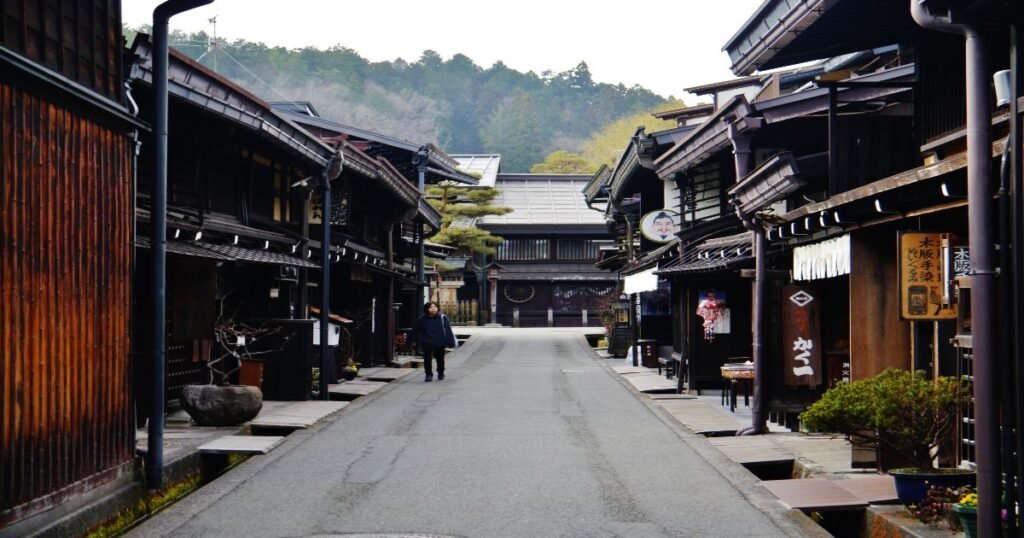
Takayama is a well-preserved town in the Japanese Alps, known for its traditional Edo-period streets and houses. It offers a glimpse into old Japan with its historical architecture and cultural festivals.
Historical and Cultural Significance: Takayama’s Old Town has been preserved since the Edo period (1603-1868), and it remains a cultural gem, showcasing Japan’s rich heritage.
Unique Features: The narrow streets of Takayama are lined with old merchant houses, sake breweries, and shops that retain their original charm. The town is also famous for the Takayama Festival, one of Japan’s most beautiful seasonal celebrations.
Best Time to Visit: The best time to visit Takayama is in the spring (April) or autumn (October) to coincide with the Takayama Festival, when the streets are filled with beautifully decorated floats.
Travel Tips:
- Transportation: Takayama is accessible by train from Nagoya or Toyama.
- Accommodation: Stay in a traditional ryokan or guesthouse to fully experience the charm of this historic town.
- Local Customs: When visiting sake breweries, it is customary to try sake tastings, but remember to drink responsibly.
11. Nikko Toshogu Shrine, Tochigi Prefecture
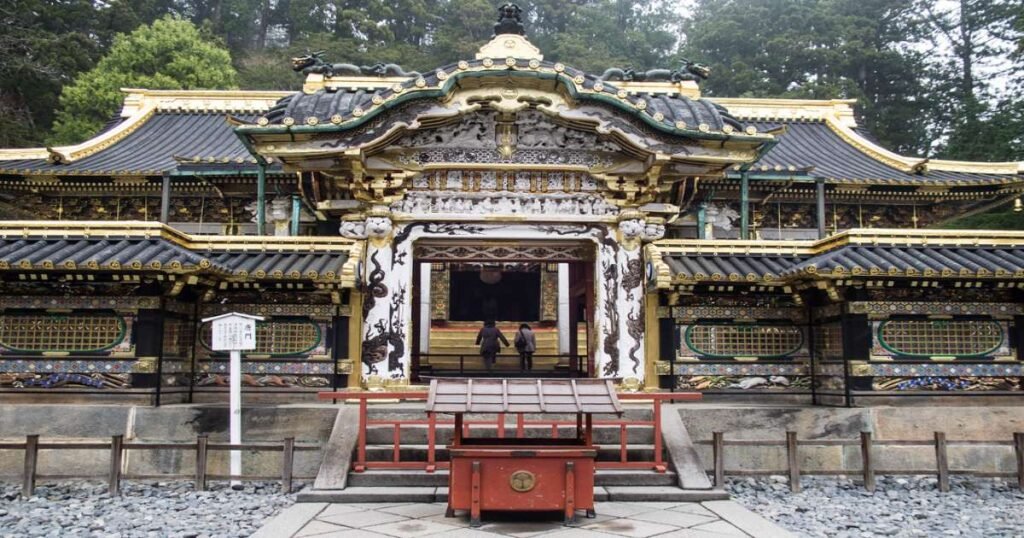
Nikko Toshogu Shrine is a stunningly ornate Shinto shrine dedicated to Tokugawa Ieyasu, the founder of the Tokugawa shogunate. Nestled in the forests of Nikko, the shrine is both a historical monument and a masterpiece of art.
Historical and Cultural Significance: The shrine complex was built in 1617 to honor Tokugawa Ieyasu, one of the most important figures in Japanese history.
Unique Features: The shrine is famous for its vibrant colors, intricate carvings, and the “Three Wise Monkeys” carving, which depicts the principle of “see no evil, hear no evil, speak no evil.”
Best Time to Visit: The best time to visit Nikko is in autumn (October to November), when the surrounding forests display stunning fall foliage.
Travel Tips:
- Transportation: Nikko is accessible by train from Tokyo, making it an easy day trip.
- Accommodation: There are several traditional inns and hotels in Nikko, catering to both luxury and budget travelers.
- Local Customs: Respect the sacred nature of the shrine, and observe the proper etiquette when offering prayers at Shinto shrines.
12. Kiyomizu-Dera Temple, Kyoto
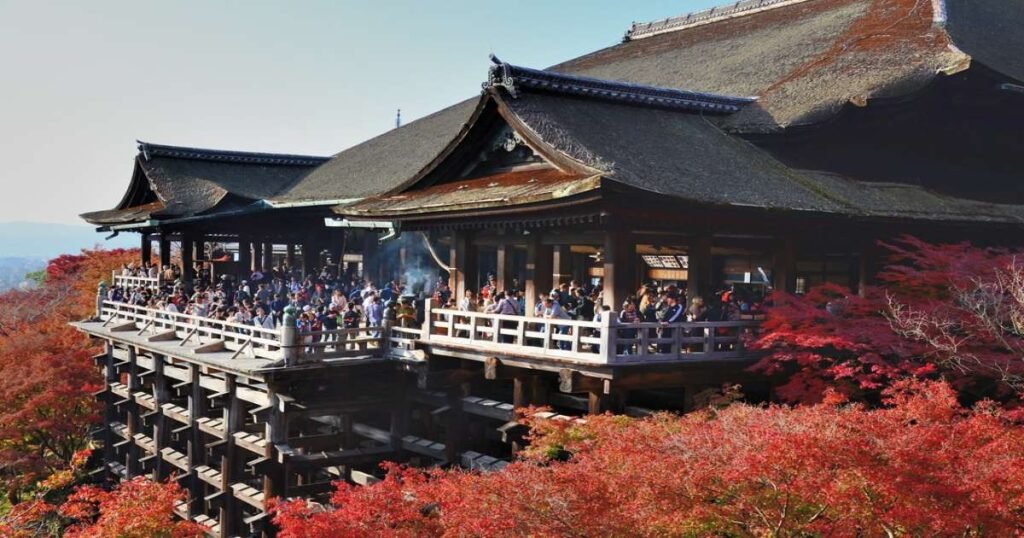
Kiyomizu-dera is one of Kyoto’s most celebrated temples, famous for its wooden stage that offers panoramic views of the city and surrounding cherry blossoms.
Historical and Cultural Significance: Founded in 780 AD, Kiyomizu-dera has been a significant pilgrimage site for centuries. The temple’s name, meaning “Pure Water Temple,” comes from the Otowa Waterfall.
Unique Features: The wooden stage, constructed without the use of nails, is a feat of ancient architecture and provides spectacular views, especially during the cherry blossom season and autumn foliage.
Best Time to Visit: Visit Kiyomizu-dera in spring (March to April) for cherry blossoms or in autumn (November) for the brilliant fall colors.
Travel Tips:
- Transportation: The temple is a 20-minute walk from Kiyomizu-Gojo Station on the Keihan Railway Line.
- Accommodation: Staying in central Kyoto provides easy access to Kiyomizu-dera and other historic sites.
- Local Customs: Visitors can drink from the Otowa Waterfall, believed to grant wishes related to health, longevity, and success in school.
13. Okinawa’s Shurijo Castle
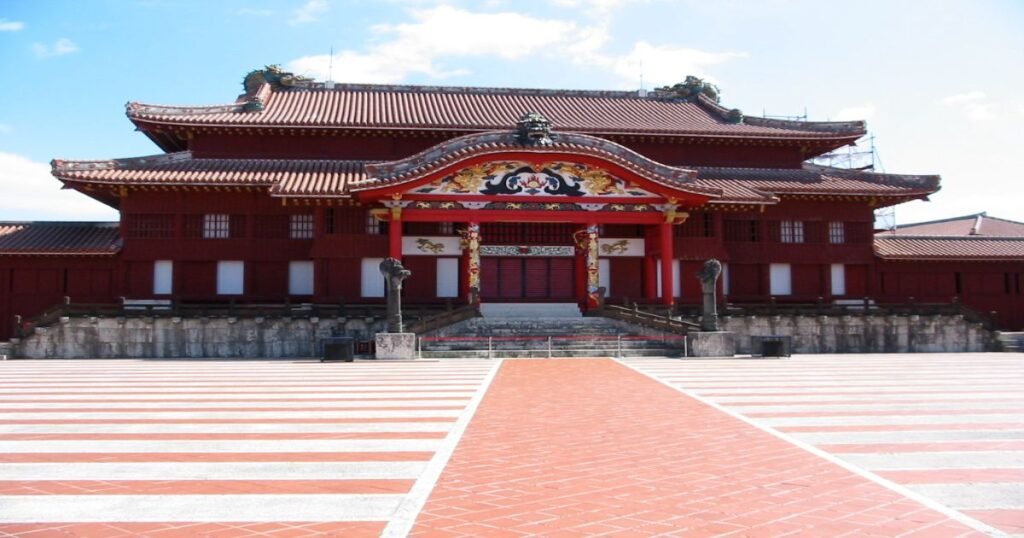
Shurijo Castle, located in Naha, Okinawa, was the royal palace of the Ryukyu Kingdom and a symbol of Okinawa’s unique history and culture.
Historical and Cultural Significance: The castle played a central role in the Ryukyu Kingdom’s political, economic, and cultural life from the 15th to 19th centuries.
Unique Features: Shurijo Castle’s architecture blends Japanese and Chinese influences, reflecting Okinawa’s historical ties with China. The castle’s bright red walls and Chinese-style gates set it apart from traditional Japanese castles.
Best Time to Visit: The best time to visit is during the Ryukyu Kingdom Festival in late October, which celebrates Okinawan culture with traditional performances.
Travel Tips:
- Transportation: Shurijo Castle is accessible by monorail from Naha’s city center.
- Accommodation: Naha offers a variety of hotels, from budget to luxury, with many located near the monorail for convenient travel.
- Local Customs: Okinawa has its own unique customs, so learning a few local phrases and greetings is appreciated by the island’s residents.
14. Hakone and Lake Ashi, Kanagawa Prefecture
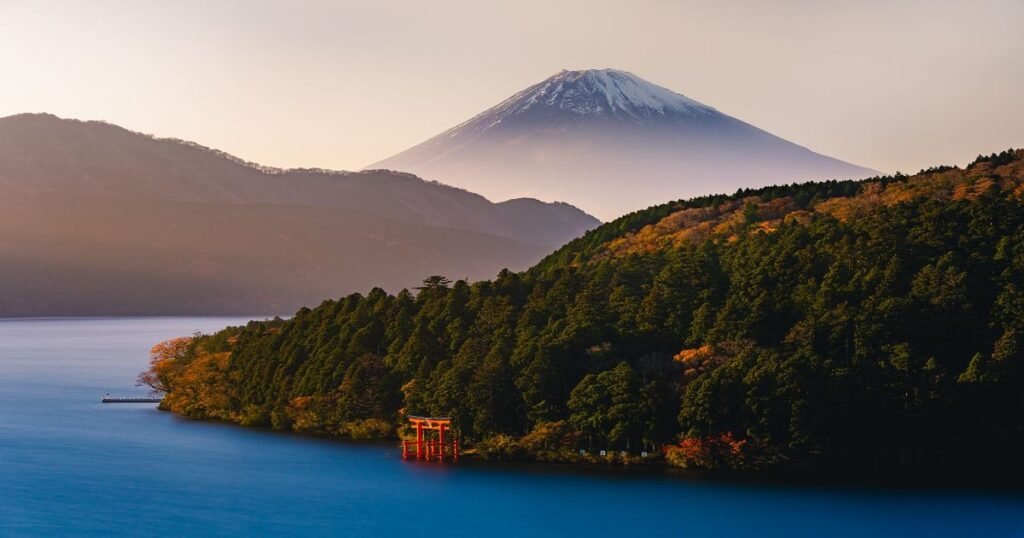
Hakone is a popular destination near Tokyo, known for its hot springs, scenic views of Mount Fuji, and Lake Ashi, which offers beautiful boat rides with stunning landscapes.
Historical and Cultural Significance: Hakone has been a resort town since the Edo period, known for its onsens (hot springs) and as a stop along the ancient Tokaido Road that connected Tokyo with Kyoto.
Unique Features: Visitors can take a cruise on Lake Ashi, visit the Hakone Shrine, or relax in one of the many hot springs while enjoying views of Mount Fuji.
Best Time to Visit: The best time to visit Hakone is in the spring (March to April) for cherry blossoms or in autumn (October to November) for the vibrant fall foliage. On clear days, you can enjoy unobstructed views of Mount Fuji.
Travel Tips:
- Transportation: Hakone is easily accessible from Tokyo via the Odakyu Line. You can also take the Hakone Free Pass, which allows unlimited travel on transportation within Hakone.
- Accommodation: Hakone is famous for its ryokans (traditional Japanese inns) with hot springs, providing a relaxing stay.
- Local Customs: While bathing in an onsen, make sure to follow the etiquette of washing thoroughly before entering the shared hot spring pools.
15. Kanazawa Castle and Kenrokuen Garden, Ishikawa Prefecture
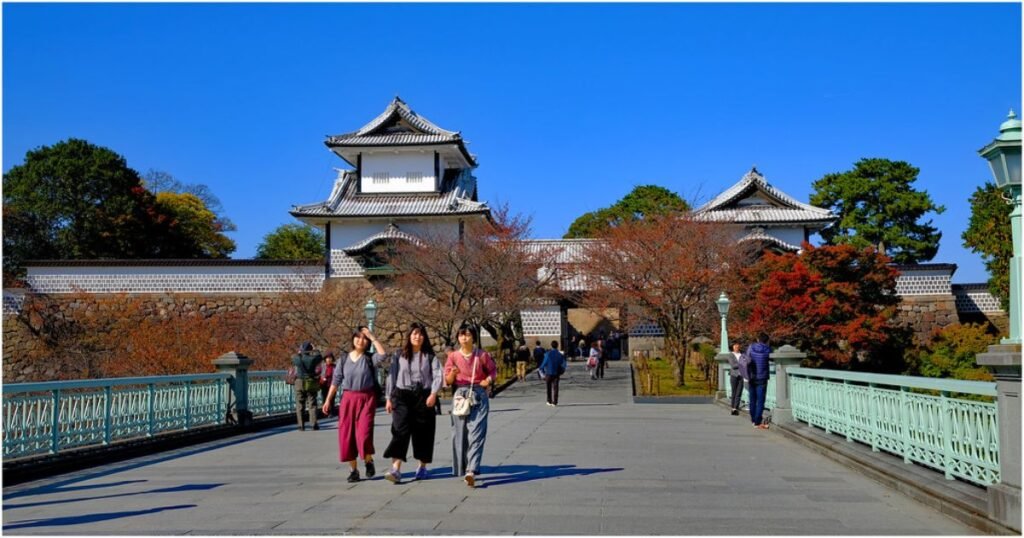
Kanazawa Castle, alongside the Kenrokuen Garden, is one of Japan’s most well-preserved historical landmarks.
Historical and Cultural Significance: Kanazawa Castle was originally built in the late 16th century and served as the seat of the Maeda clan, one of Japan’s most powerful feudal families. Kenrokuen Garden, once the private garden of the castle, is considered one of the three most beautiful gardens in Japan.
Unique Features: The castle is known for its impressive stone walls and traditional Japanese architecture, while Kenrokuen Garden is famous for its seasonal beauty, featuring ponds, streams, and teahouses.
Best Time to Visit: The best time to visit is in the spring (March to April) when cherry blossoms bloom or in winter (December to February) for the snow-covered landscapes, which create a magical atmosphere.
Travel Tips:
- Transportation: Kanazawa is accessible by the Hokuriku Shinkansen from Tokyo or Osaka.
- Accommodation: Kanazawa offers a mix of modern hotels and traditional inns. Staying near the castle or garden provides easy access to both attractions.
- Local Customs: When visiting the garden, take your time to enjoy the tranquility and beauty, and be respectful of nature and surroundings.
Also Read: Best Tourist Attractions In Thailand
Conclusion
Japan’s rich tapestry of history and culture is best experienced through its numerous historical sites, from ancient temples and shrines to well-preserved castles and towns.
Each location offers a unique glimpse into Japan’s past, with its own blend of tradition, architecture, and natural beauty.
Whether you’re drawn to the grandeur of Kyoto’s temples, the serenity of Miyajima Island, or the historic significance of Hiroshima’s Peace Memorial, Japan’s historical attractions provide unforgettable experiences.
FAQs
1. What are the most iconic historical sites to visit in Japan?
Some of the most iconic historical sites include Kyoto’s Kinkaku-ji and Fushimi Inari Shrine, Hiroshima’s Peace Memorial, and Nara’s Todaiji Temple.
2. When is the best time to visit Japan’s tourist attractions?
The best times to visit Japan’s tourist attractions are during spring (March to April) for cherry blossoms or autumn (October to November) for colorful foliage.
3. What is the cultural significance of Japan’s temples and shrines?
Temples and shrines in Japan are not only religious sites but also cultural landmarks that represent centuries of tradition, architecture, and history.
4. How can I respect local customs while visiting historical sites in Japan?
To respect local customs, follow the guidelines at each site, such as removing shoes before entering temples, being quiet and respectful in sacred spaces, and following proper etiquette when offering prayers at shrines. Additionally, be mindful of the environment and avoid littering or damaging the surroundings.
5. Are Japan’s tourist attractions accessible for tourists with limited mobility?
Many of Japan’s tourist attractions, especially popular ones like Kyoto’s temples and Tokyo’s shrines, have made efforts to be more accessible. However, due to the nature of some ancient architecture and uneven terrain, not all areas may be fully accessible. It’s best to check accessibility options in advance.

